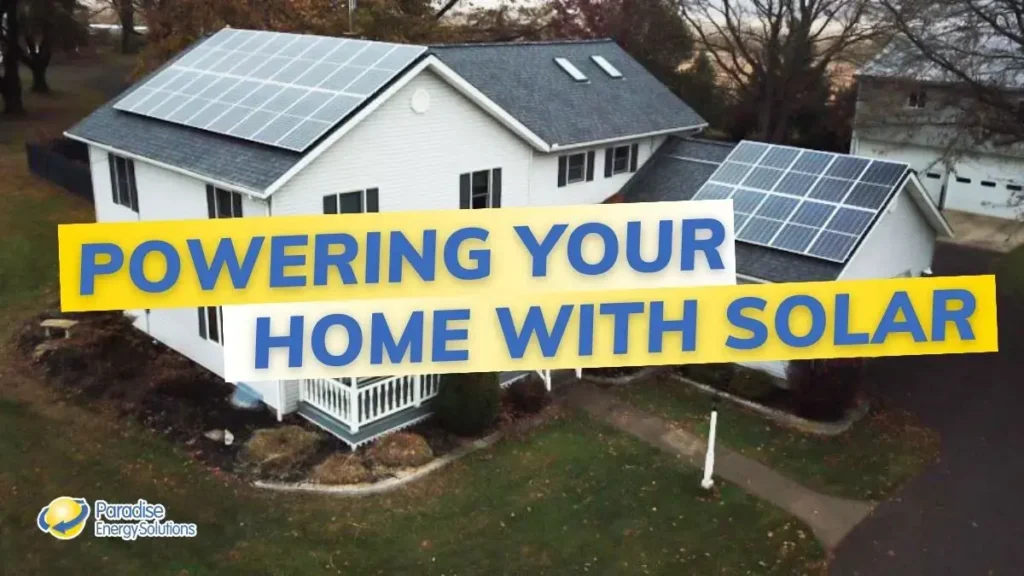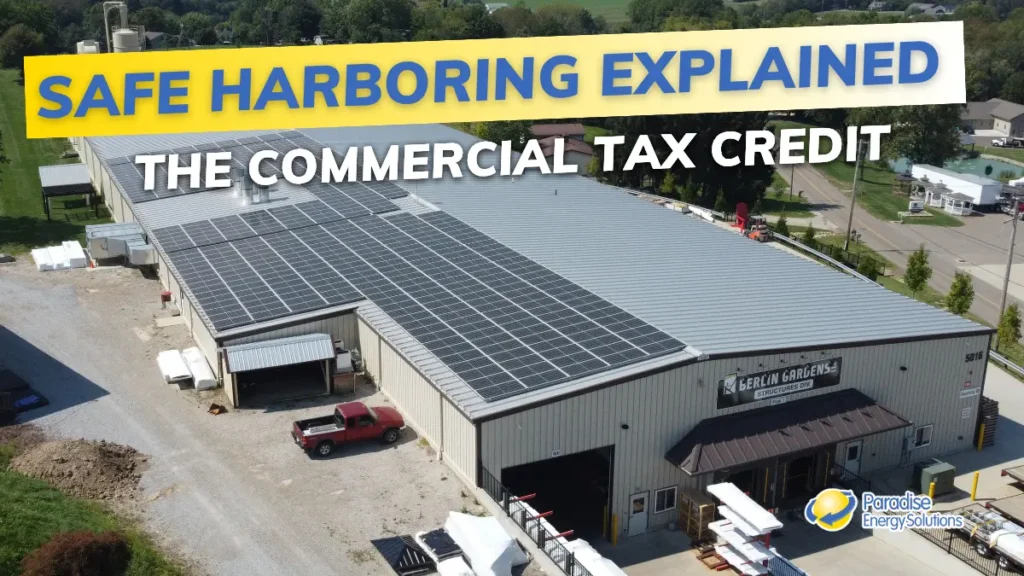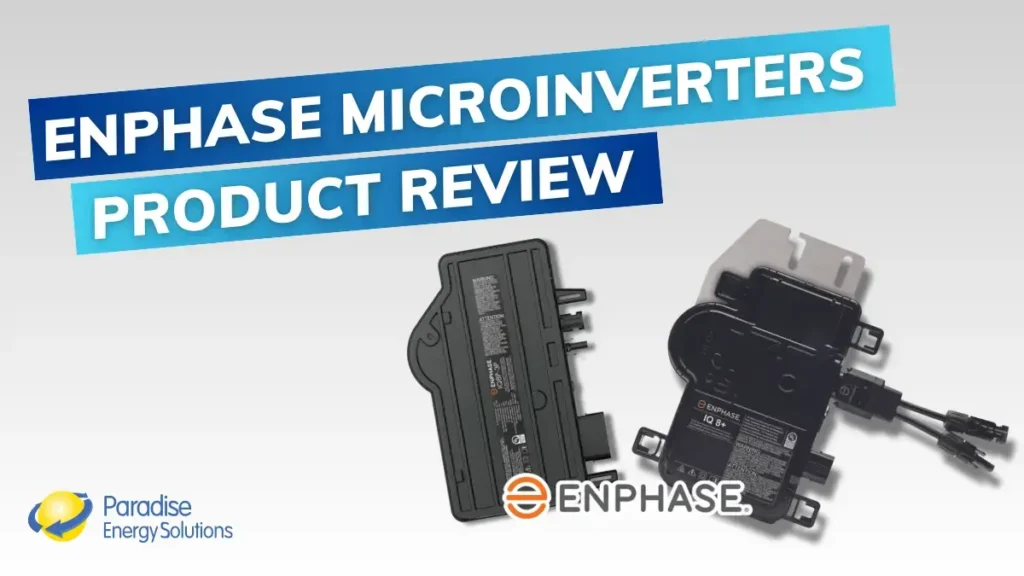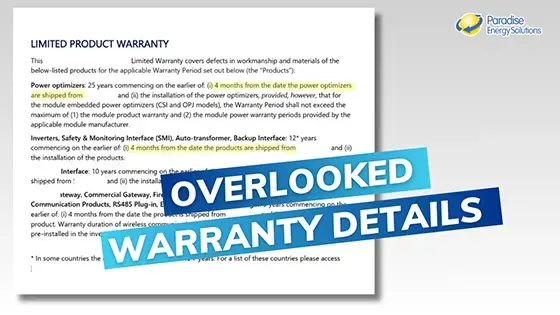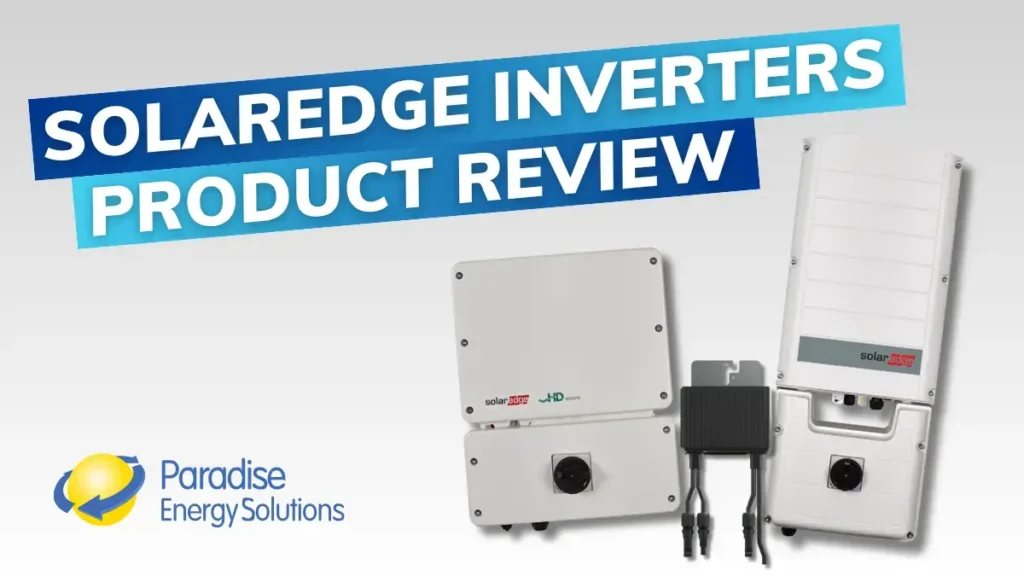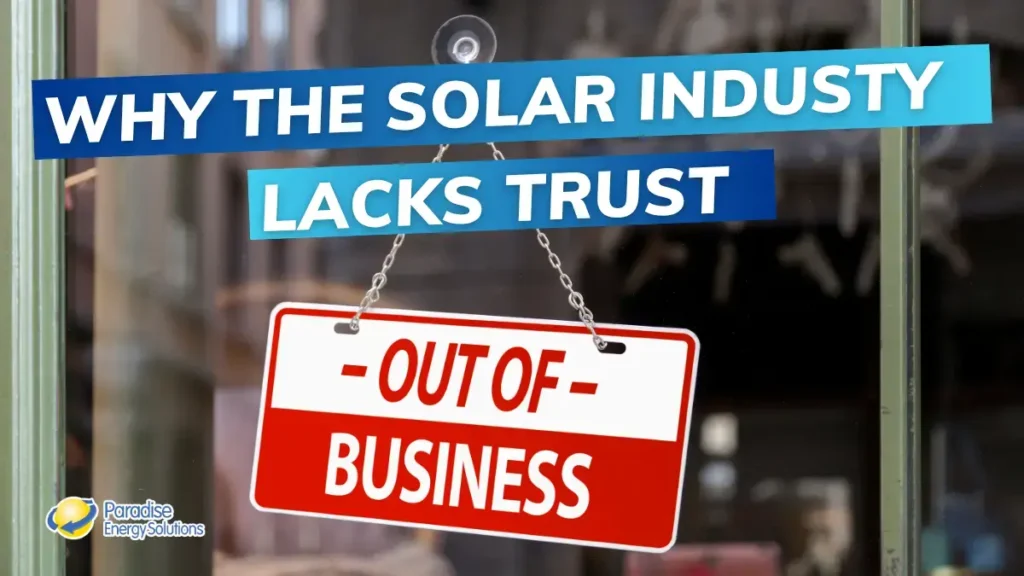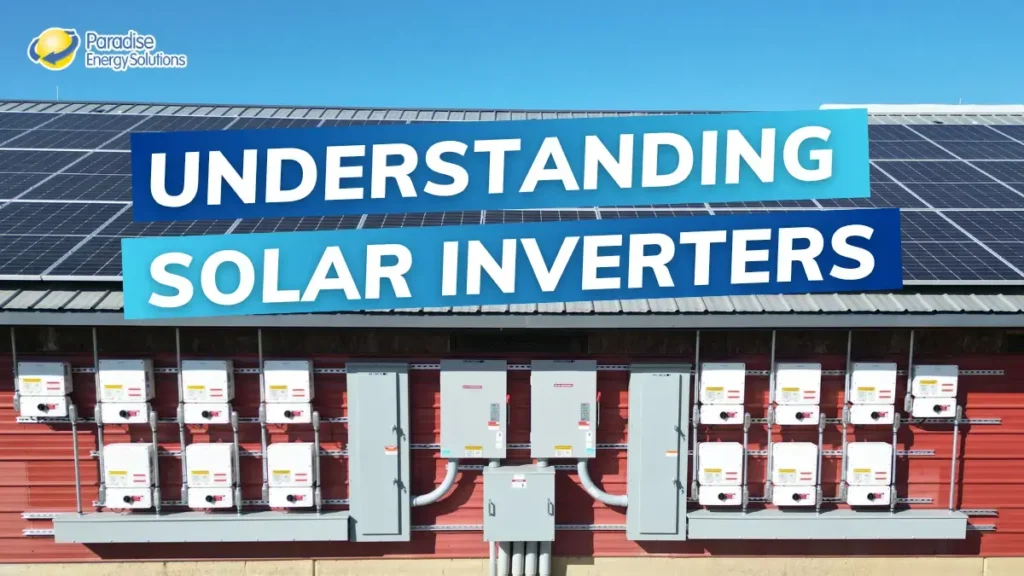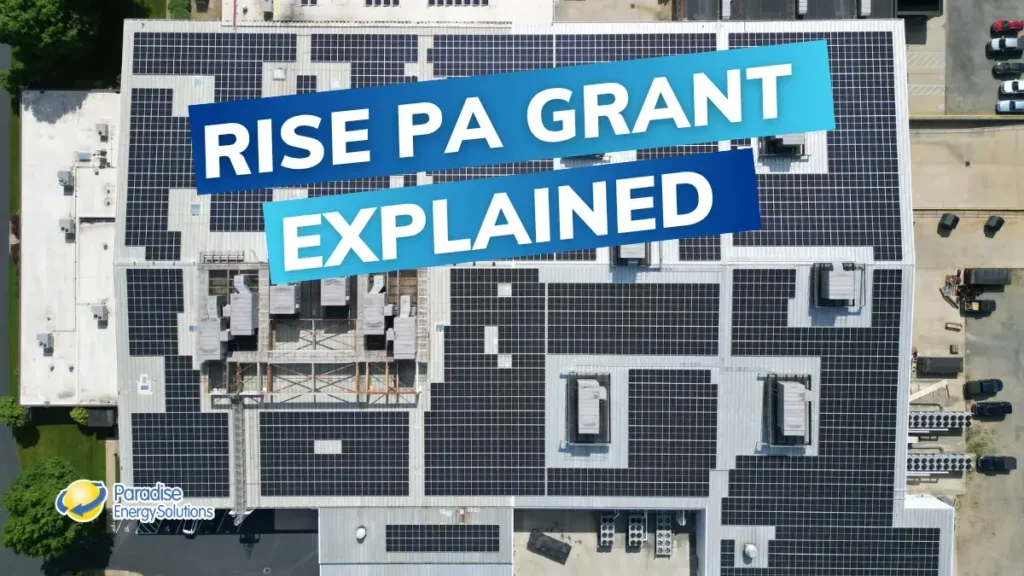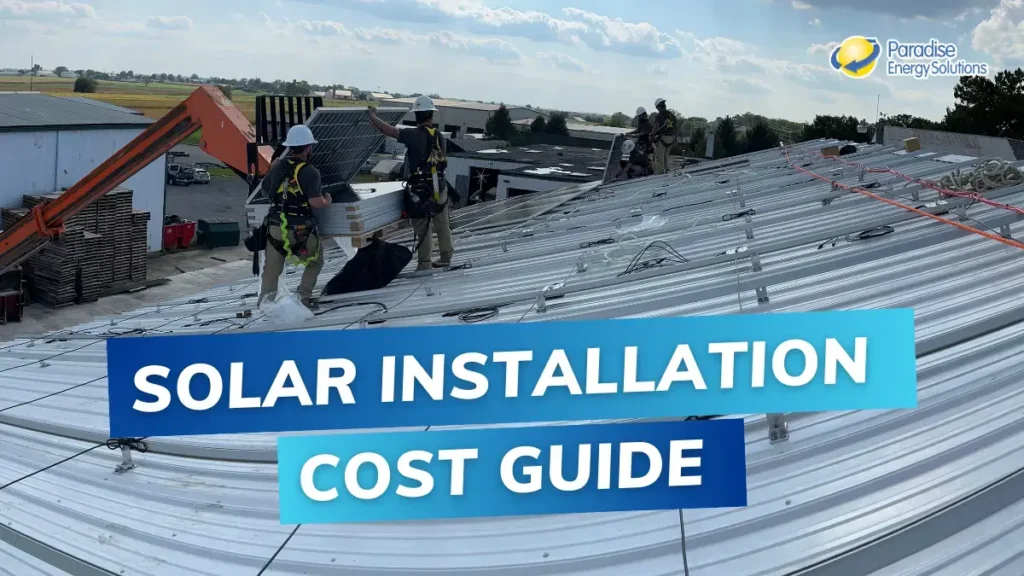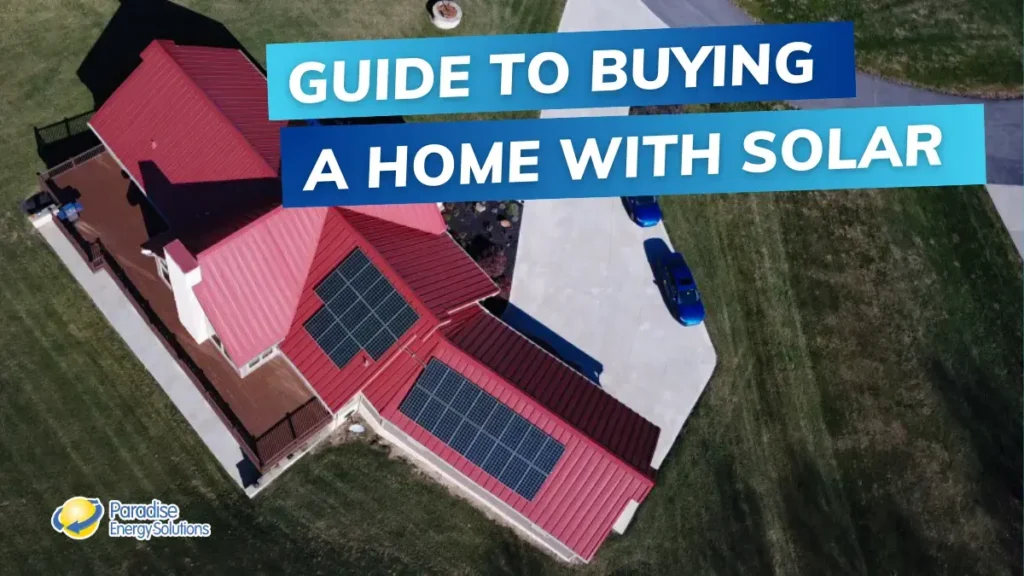Whether for economic reasons, ecological reasons, or both, getting 100% of your electricity from your own renewable energy source can be powerful. It can make a measurable impact on the environment by keeping CO2 out of the atmosphere. It can also keep money in your bank account by providing you with free electricity for decades.
Meeting 100% of a home’s power needs with solar energy is doable. But there are a few factors to consider.
First, you’ll need to determine how much energy you use, and then assess certain limiting factors for your property. These factors include the space you have available for your solar system. They also include typical weather patterns and shading on your property. You’ll need to decide between off-grid and grid-tied, which can influence the need for batteries and the cost of your system.
We’ll take a look at how each of these can impact your solar system. This will give you a better idea of how likely you’ll be able to power your home entirely with solar energy.
Factors that Impact The Ability to reach 100% Coverage with Solar Energy
How Much Energy You Use
To meet 100% of your home’s energy needs, your solar installer will first have to determine how much energy your home typically uses. The most common way is to take a look at your past electricity usage, which is included in your electricity bills.
However, it’ll go beyond reading the most recent bill. There are quite a few variables that a solar installer will have to take into account when designing a system that meets all your energy needs. The amount of electricity you use will likely vary from month to month and season to season.
Milder weather in the spring and fall may lead to lower electricity bills compared to hot summers when the air conditioning is blasting. Longer days and more time spent indoors could lead to an uptick in electricity usage during the winter. Your solar installer needs to average out how much electricity you typically use to fully understand how big of a system you will need.
Another variable is the weather and climate in your local area. The amount of electricity a solar system in Florida produces over a year is going to be different than a solar system in Washington (though solar has proven itself profitable in even extremely cloudy or rainy areas).
Regardless of where you live, the amount of electricity your system generates in the summer is going to be much greater than in the winter. Installers will look at average weather patterns in your area to get an accurate estimate of how much electricity you can realistically generate throughout the year.
Your Available Space
Solar panels need to be installed in a bright, sunny spot that won’t interfere with your day to day. For many properties, the place that makes the most sense is the roof, however, solar panels can be installed on land as a ground-mounted solar system if that’s more suitable for your situation.
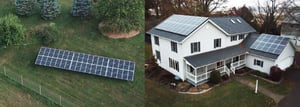 In order to install a solar system that can fulfill 100% of your home’s electricity needs, you’ll need the space to do so. One, 330W solar panel takes up about 19.5 sq. ft. A solar system for a typical home will range between 5 kW and 20 kW. That means you’ll need between 312 sq. ft. and 1,189 sq. ft. of sunny space with limited obstructions to install a system that will fulfill all your electric needs.
In order to install a solar system that can fulfill 100% of your home’s electricity needs, you’ll need the space to do so. One, 330W solar panel takes up about 19.5 sq. ft. A solar system for a typical home will range between 5 kW and 20 kW. That means you’ll need between 312 sq. ft. and 1,189 sq. ft. of sunny space with limited obstructions to install a system that will fulfill all your electric needs.
Not all roofs are created equal. North-facing roofs receive less sun throughout the day, which means you may need to install additional panels to make up for the loss in production. If there are trees that cast shade on your roof throughout the day, they may need to be trimmed or removed. Other obstructions like nearby buildings, chimneys, and even exhaust fans can also impact production.
One of the main benefits of a ground-mounted system is that it can be positioned in the ideal direction and tilt for solar production. This is something that may not be possible with a roof mount.
Deciding Between Off-Grid vs Grid-Tied
If your goal is a 100% solar-powered home, you can achieve it with either a solar system that’s off-grid or grid-tied. The difference between these is what happens to your excess electricity and how you access electricity when your system isn’t generating power.
On overcast days, rainy weather, or during the nighttime, your system won’t produce much electricity, but you’ll still need to use it. Solar can still provide you with electricity at these times by generating extra electricity during the sunny periods.
That additional electricity is either stored in batteries, in the case of off-grid systems, or it’s transferred to the electricity grid in exchange for a credit, should you opt for a grid-tied system.
An off-grid solar system is one that is entirely independent of the electric utility. That means your home won’t be able to draw power from the utility.
However, going off-grid can be expensive and may require some lifestyle changes. While batteries continue to come down in price, buying enough to get you through several dark nights and cloudy days can quickly add up. You’ll have to be conscious of how much electricity you’re using versus how much electricity your system can store.
With a grid-tied system, you’ll be able to generate 100% of the electricity your home uses, but without the need to purchase batteries to store extra energy.
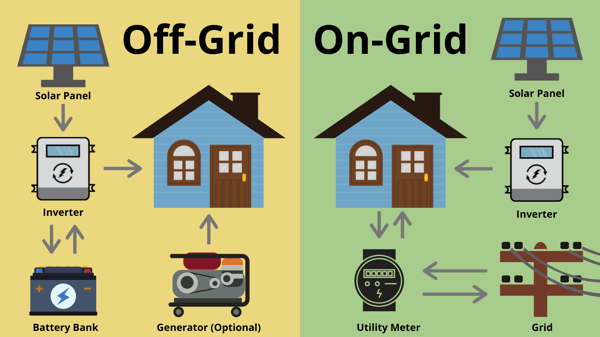
Many states require utility companies to provide net metering or another compensation method, like New York’s Value Stack, for the electricity generated by your solar system that’s added to the grid. With net metering, you’ll get a kilowatt-hour credit for each kilowatt-hour you’ve transferred to the grid. You can then use those credits to pay for any electricity you draw from the grid while your solar system isn’t producing.
Using Solar to Meet 100% of Your Homes Energy Needs
For many homeowners, 100% coverage using solar energy is a reasonable goal. As long as your property is suitable for the size solar system you need, you should be able to completely offset your energy usage with solar.
If you’re ready to see if solar energy is right for you, click the request a price button below.
Do you want to learn more about solar energy before jumping into a quote? Then our Solar Buying Guide is a great resource for you. Get answers to many of the common questions so you’re prepared to make an informed decision when the time is right for you.
